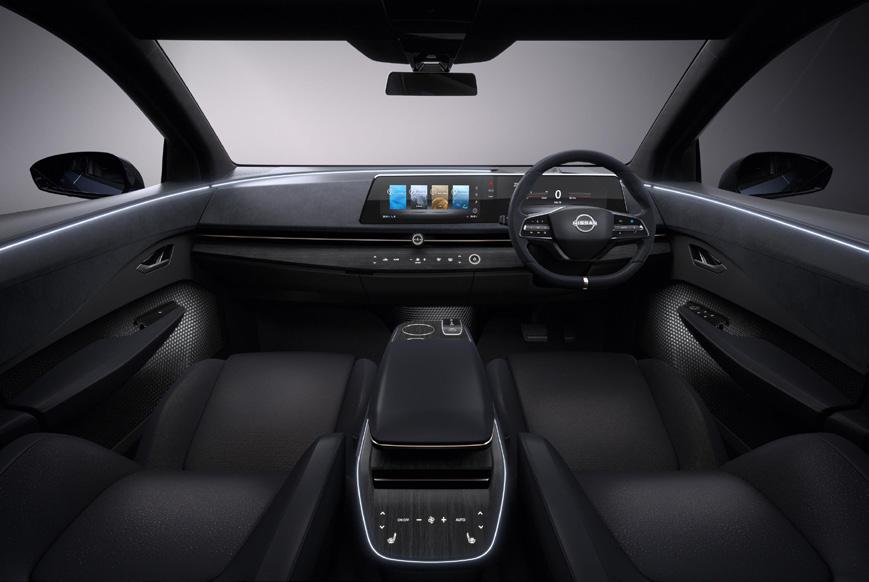
2 minute read
PUSHING BOUNDARIES
Concept vehicles are pushing the boundaries

Advertisement
he Nissan Ariya Concept, introduced at the 2019 Tokyo Motor Show, was designed to embody the three pillars of Nissan Intelligent Mobility – Intelligent Power, Intelligent Driving and Intelligent Integration (see facing page). The SUV combines advanced electric vehicle (EV) technology with a new level of seamless humanmachine interface connectivity and offers an entirely new driving experience.
It offers a spacious, premium cabin with high-tech features and a body that conveys the pure, clean nature of electric cars.
A dual motor driveline delivers balanced, predictable power to all four wheels, giving a sports car-like driving experience.
The Ariya Concept also features ProPILOT2.0, which combines navigated highway driving with hands-off single-lane driving capabilities.
Although it’s a concept vehicle, the crossover EV’s bold styling and unconventional interior and exterior could make it into production in the near future.
For city-dwellers, the IMk Concept showcases a more compact electric Nissan. Designed to be the ultimate urban commuter, the chic city car is about more than just function.
It’s fully connected and provides the latest ProPILOT advanced driver assistance technology. Nissan’s Invisible-to-Visible (I2V) technology merges information T Ariya and the IMk will offer entirely new driving experiences
from sensors outside and inside the vehicle with data from the cloud. It can track the vehicle’s immediate surroundings and anticipate what’s ahead, even showing what’s behind a building or around the corner. EVs only go part of the way to fully de-carbonise transport. That’s why Nissan Intelligent Mobility is a core part of Nissan’s sustainability strategy, ensuring drivers have access to zero-emission while driving vehicles, but also a renewable energy source to fuel them.
If the transition from petrol and diesel to electric is to achieve a carbon-neutral society, it must be coupled with an increase in renewable energy generation.
With the right systems, infrastructure and incentives in place an increase in EV ownership can directly aid the transition towards a new model of a clean, decentralised energy system.
Intelligent Mobility is the interaction of EVs with the surrounding infrastructure, including energy systems. It represents a transformation in the way vehicles are driven, integrated into society and powered.
Nissan is involved in the development of many additional technologies supporting the transition to low carbon, including smart charging, battery storage and vehicle-to-grid (V2G).
Utilising the batteries in EVs through energy storage or V2G will be crucial if we rely on renewable energy sources, which have fluctuating power outputs.
You can store excess energy in the vehicle when supply is high, and use that stored energy when production is low. Using the EV battery in this way would mean the timing of energy production and energy consumption can be de-coupled.
The ability to use batteries in EV or second life batteries as storage units represents a readily available solution. Ariya’s body conveys the pure, clean nature of electric cars Ariya has a spacious premium cabin










